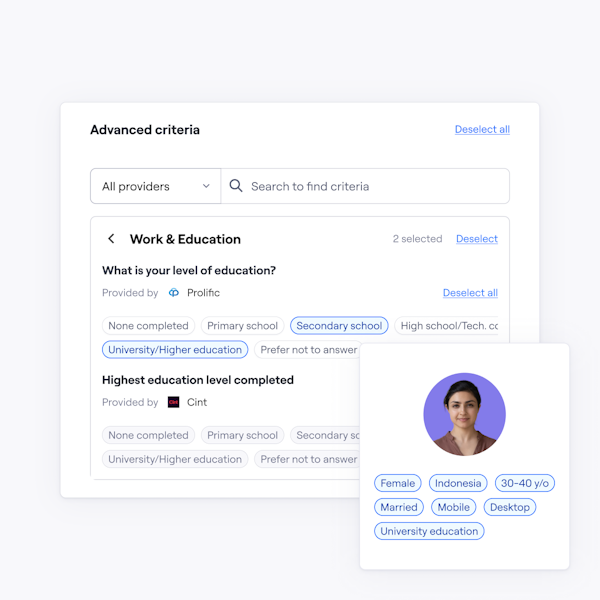
User Research
The magic number for user testing: How many users do you need?

Take this short quiz to find an approximate sample size for your research study–the number of participants needed to truly trust your results.
Factor | How it impacts research sample size |
|---|---|
Confidence interval | Typical confidence intervals lie between 90-95%. If you aim for a higher value, you'll need ↗ more participants to ensure data robustness. |
Criticality of project | Highly critical projects—like medical devices, security services, or key business platforms - will require ↗ more participants. |
Population/segment size | Larger populations need ↗ more participants. |
Population diversity | User research with more diverse populations need ↗ more participants as they are more prone to uncover a broader range of perspectives. |
Quantitative data type | When categorical data types are used, you need ↗ more participants than when dealing with numerical data types. |
Sampling | If you pick your participants at random, you'll likely capture the breadth of perspectives that live in your population, so ↘ fewer participants are needed. However, when introducing non-random sampling, you need ↗ more participants. |
Type of study | For a tactical study, conducted to make quick fixes and immediate improvements, generally ↘ fewer participants are required. On the other hand, when dealing with a strategic study in order to shape a product’s long-term direction you should aim to recruit ↗ more participants. |
Find participants who actually matter. With 400+ available filters and 130+ countries to choose from, recruiting the exact participants you need has never been easier.
